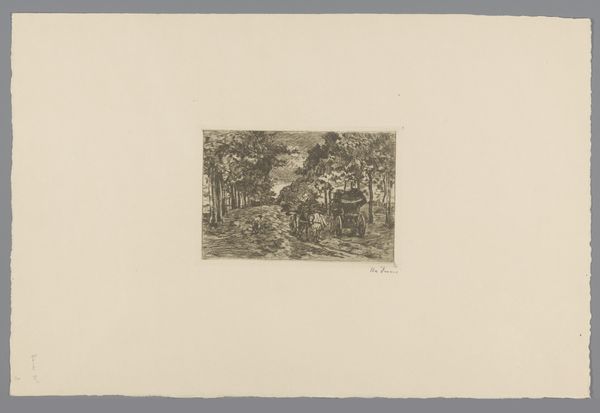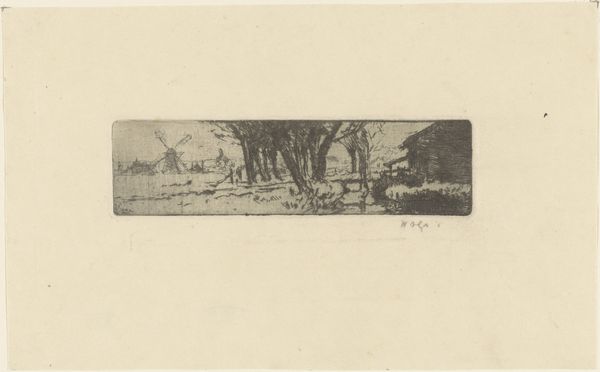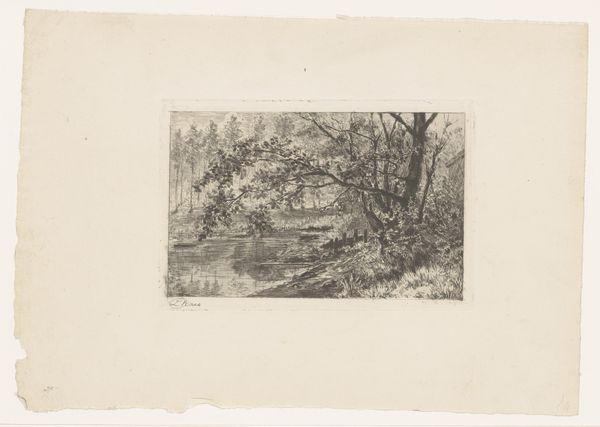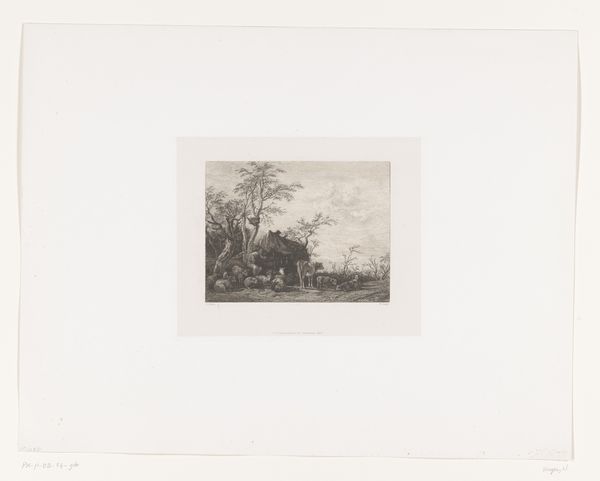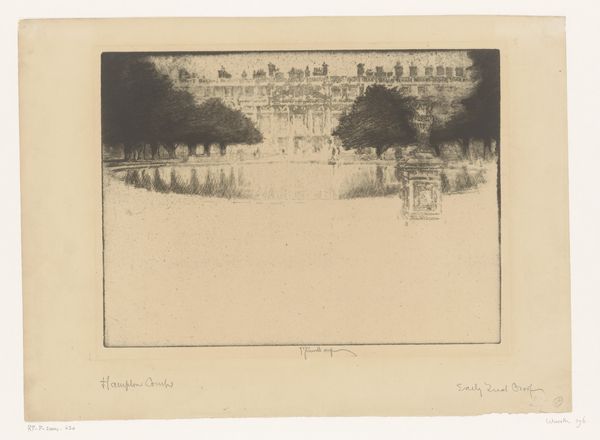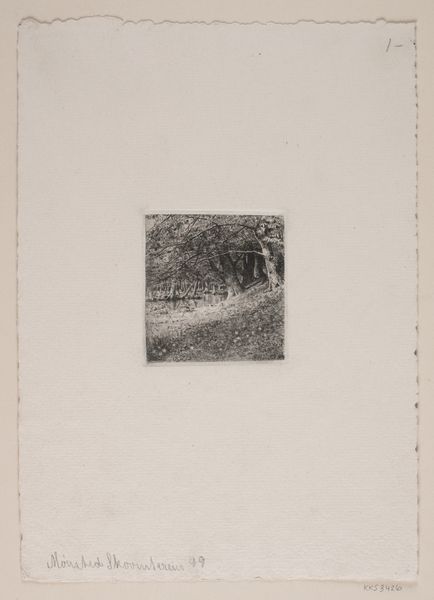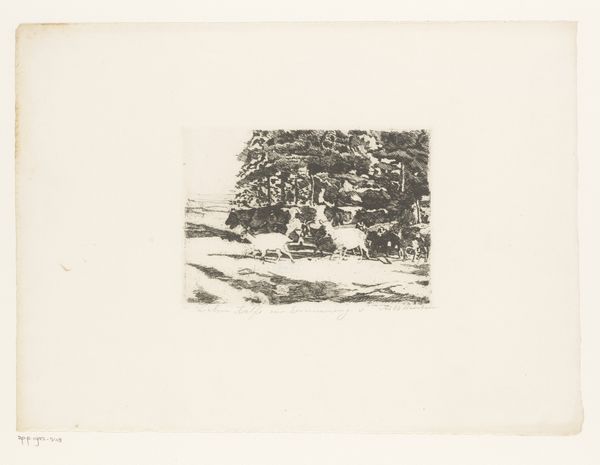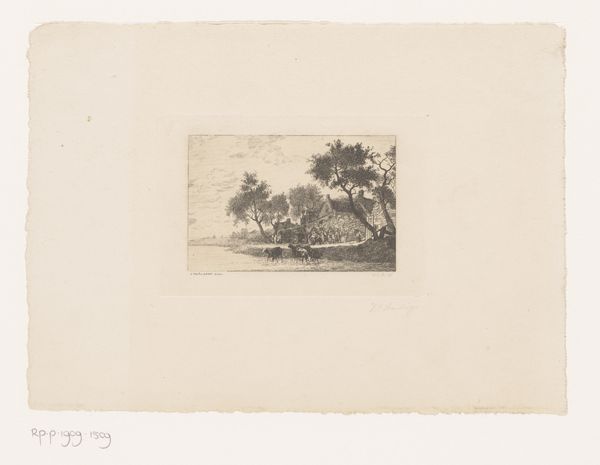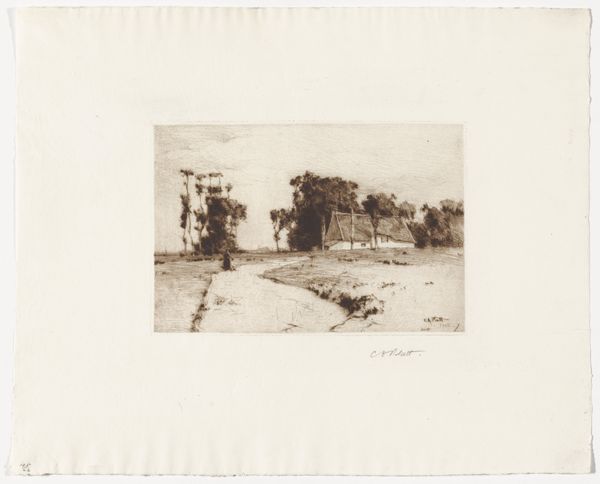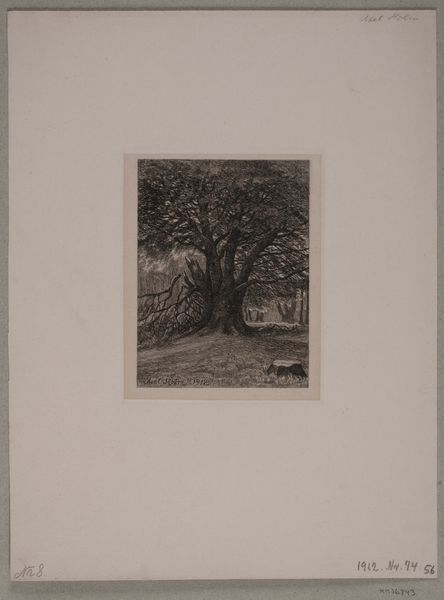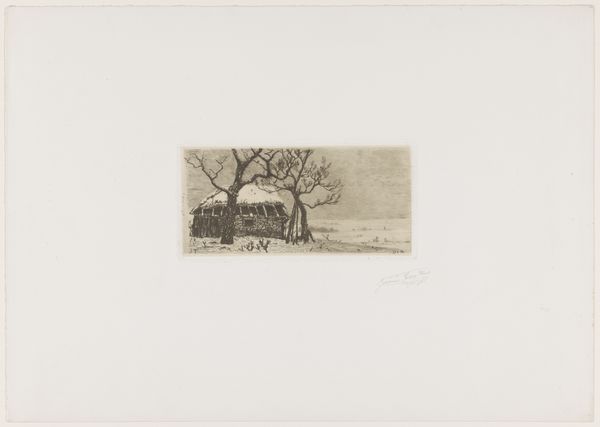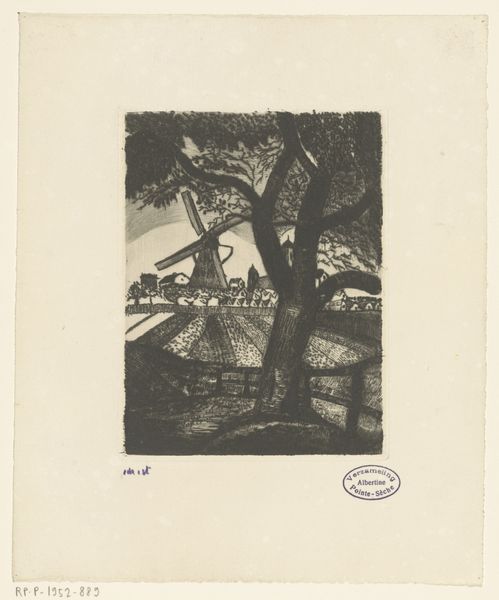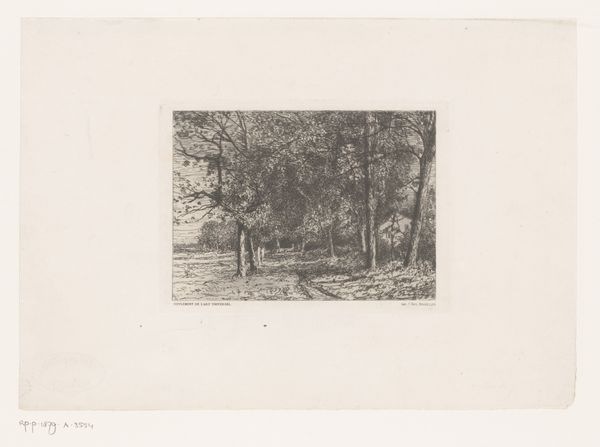
print, etching, paper
# print
#
etching
#
landscape
#
paper
#
cityscape
#
modernism
#
realism
Dimensions: height 120 mm, width 203 mm
Copyright: Rijks Museum: Open Domain
Curator: Let's delve into this subtle etching by Louis Titz, dating sometime between 1869 and 1913. It’s called "Begijnhof Ten Wijngaerde en Wijngaardbrug in Brugge." Editor: My first thought? It's a bit like peering through a forgotten window, a monochrome memory shimmering on paper. There's something melancholic, yet peaceful about it. Curator: Precisely. Titz, working within a realist and modernist framework, has meticulously rendered this cityscape using etching techniques on paper. One might even argue the heavy reliance on the material contributes to the sense of temporal distance you picked up on. Editor: Oh, totally! You can almost feel the hand of the artist, carefully coaxing the image from the metal plate. And the scene itself - that bridge arching so gracefully, the bare tree branches reaching like skeletal fingers - there's a beautiful, almost stark poetry to it. Curator: Consider also the social context. Begijnhoven were essentially communities of lay religious women. Titz’s choice to depict this location implicates larger societal structures. The print medium itself facilitated broader consumption of these images, disseminating visions of social organization. Editor: Hmm, a mini-revolution one print at a time. The way light is suggested here through these layers of shadow; it makes the water feel alive, almost murmuring secrets. I wonder, what's beyond those buildings? What kind of lives unfolded there, beyond what we can see. Curator: And consider the materials further. Paper, as a relatively inexpensive medium for disseminating these kinds of views. Etchings allowed a degree of precision unavailable with other low-cost production methods. Editor: That balance of accessibility and control makes so much sense in connecting to how that historical period felt. It really enhances that mood of quiet reflection, almost introspection. I like it a lot. Curator: It is intriguing, isn't it? How seemingly simple materials and compositional choices can evoke such a rich tableau of associations. Editor: Totally. Art, especially the quieter pieces, reminds me that history isn't just dates and battles; it’s the echoes in the everyday. It makes me wonder about the stories etched not just on the paper, but in the stones and water as well.
Comments
No comments
Be the first to comment and join the conversation on the ultimate creative platform.
